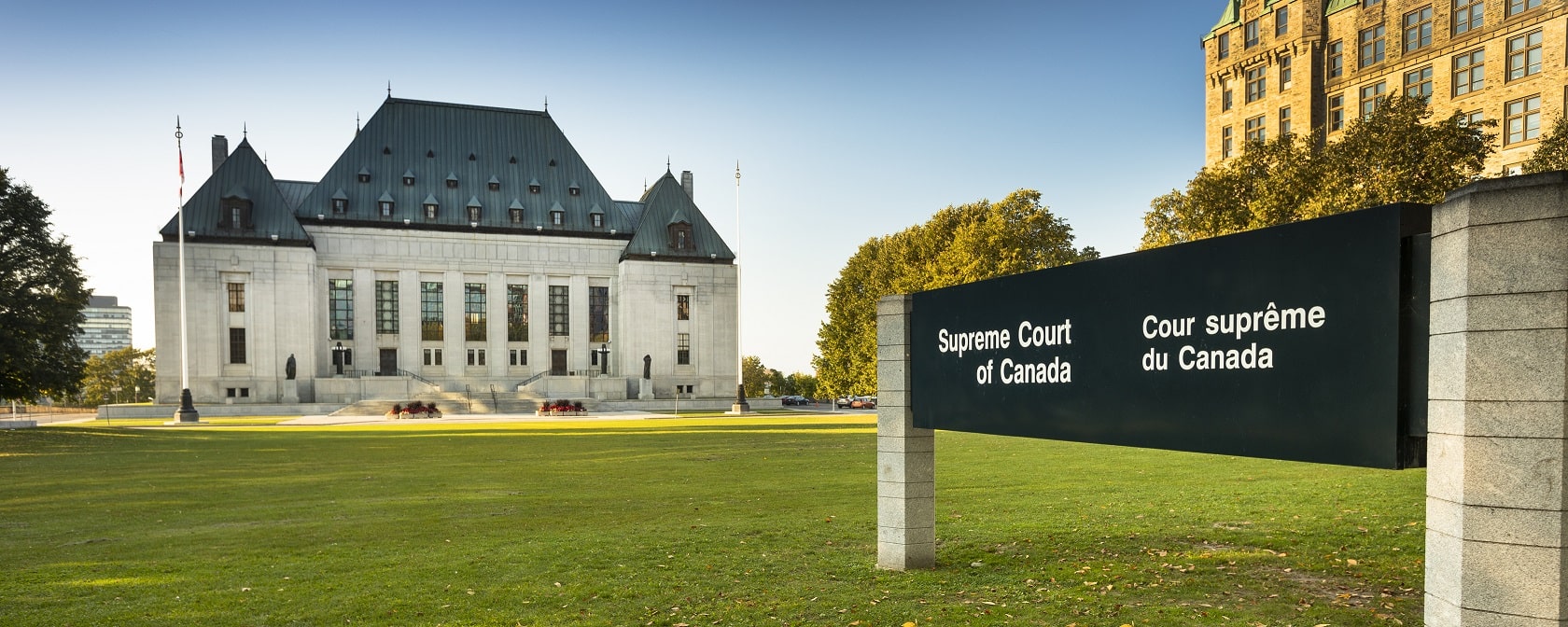Is Virtual Justice Real Justice?
Guy Pratte
Originally published on Law360 Canada, formerly, The Lawyer’s Daily, © LexisNexis Canada Inc
When the pandemic first hit in the spring of 2020, I would not have believed that our courts could do so much virtually as has been done. Indeed, what was made possible through video platforms is simply astounding. By and large, the wheels of justice continued to turn much better than we could have anticipated.
But now that the courts have fully “re-opened” and that in-person hearings are again possible with very few if any restrictions, an important question emerges: to what extent should parties and counsel be required (or at least entitled) to appear in-person for court proceedings henceforth?
Judges and advocates are quite divided about the benefits and costs of “virtual justice,” namely the ability to appear in court through sophisticated software without actually being in court. Some believe that platforms like Zoom and Teams are actually better than in-person attendance. In their view, the ability to communicate with the court virtually is essentially equal to that of in-person attendances, while access to justice is enhanced by eliminating the need to travel to the court. Judges, parties and their counsel, and witnesses are able to participate effectively from their offices or their homes, thus making justice cheaper and more convenient.
Even the Supreme Court of Canada seems to have subscribed to this view, as it has now extended its directive that parties granted the right to intervene cannot appear in-person, but must do so virtually. A good argument is a good argument, it is said, and it makes no difference whether it is delivered in person or remotely.
Thus, many argue that the world of in-person attendances is old and passé, and that in-person hearings should become the exception rather than the other way around; that the convenience and increased access to justice made possible by virtual hearings vastly outweigh any potential benefits in-person hearings might offer. With respect, I disagree. For the following reasons, I hold that, except for the most routine matters (such as case management conferences designed to address timetables) or in exceptional circumstances (e.g., limited evidence from a far-away witness), that view is unsound.
So, why do we have in-person hearings?
THE QUALITY OF JUSTICE
One major reason for insisting on an in-person hearing is that in-person attendance promotes communication. The court can observe witnesses directly; examinations and cross-examinations are more natural (and often more effective) when a witness “feels” the court: there is undoubtedly a “disciplining” effect on all the participants being in the same room in the presence of a judge. Moreover, exchanges between the bench and counsel are unquestionably more natural and dynamic when everyone is together in a courtroom: there are no screens to “freeze” and participants that forget to “unmute” themselves.
It may well be that some witnesses’ evidence will not be affected by the medium of delivery, be it virtual or in-person. But no one will ever convince me that the discipline that is introduced by a witness being physically in a courtroom, with a judge looking over his or her shoulder, is not real and preferable to the witness who is sitting in his living room, cup of coffee to the side and slippers on his feet. You can never know in advance whether a witness’s evidence might be affected by the fact that she is not in the presence of a judge.
As for exchanges between counsel and the bench, whether in the context of significant motions, arguments during trials, or appeals, there is a dynamism that is introduced by in-person hearings that is simply absent in virtual hearings. Remote hearings are just that: they are remote, and I for one never feel the same sense of immediacy as I do when I can look at a judge directly, as opposed to being limited to the view that is offered on my small screen by whomever is managing the remote hearing.
There are many definitions of “virtual.” We can use it in the technical sense of using a computer to approximate a “real” experience. The question is whether this approximation suffices. It may well be that, in many cases, this approximation does suffice, but the fact is that we can never be certain in which cases that is so. Yet as long as we know that we are not actually in a real courtroom, we also know that things could have turned out differently had we been there in person.
THE INSTITUTIONAL VALUE OF IN-PERSON HEARINGS
No one will ever be able to demonstrate that the quality of justice is detrimentally affected by remote hearings. But short of the access to justice arguments, which I address below, I don’t believe it can credibly be argued that virtual hearings are qualitatively better than in-person hearings. At best, they are rough equivalents. But why should a party that has taken a dispute to court ever be left in any doubt that the result might have been different if the witness being cross-examined by her counsel had been sitting 10 feet from the judge, rather than viewed through a small screen and sitting 500 kilometres away? Or if her counsel had been able to engage in the dynamic cut and thrust of legal argument with the judge, which, on screen, is virtually impossible (pun intended)?
In life, all of our most important activities are almost always carried out in person. You can fire a person by e-mail or on Zoom if you want, but is that not the height of hypocrisy or cowardice? You have selected such an impersonal mode of communication because you wanted to avoid the personal contact that being in the same office produces, which proves that remote communication is lacking the human immediacy we prize. We can now attend weddings and funerals online. But will anyone seriously believe that doing so is as meaningful to the newlyweds or the grieving as if you had made the effort to attend in person?
For almost anyone who takes a case to trial or on appeal, the matters at issue are extremely important. Between the time parties file the court papers and the ultimate decision being handed down, the hearing on the merits is often the only time that parties actually see their judge(s) in action: why should they ever be denied the right to appear in person and be assured that the result was not affected by the mode of hearing chosen by the court? And why should judges not want that same assurance? For, in reality, no one can know that the evidence or the arguments might not have been any different in an in-person as opposed to a virtual hearing. The institutional value of justice depends on it being delivered optimally, and that in turn requires that citizens not second-guess its mode of delivery.
THE ACCESS TO JUSTICE ARGUMENT
The main argument in favour of virtual hearings is that they promote cost efficiency and access to justice. By and large, I believe this argument is misconceived. Obviously, for routine matters, it is not (and never has been, or at least not since the telephone has been invented) justified to require in-person attendances.
But for matters that actually do go to trial or on appeal, the cost savings involved in proceeding remotely will usually be minuscule compared to the cost of preparing for and arguing the case (remotely or in-person) itself. Let us remember that only a very small proportion of cases launched ever go to trial, and fewer still go on appeal. Those that proceed obviously have some importance for at least one of the parties involved. Most cases will be heard in a courtroom relatively proximate to the lawyers and parties involved. In any event, the cost of travelling to court compared to the hundreds of hours that will be involved in preparing and arguing the case will be insignificant.
The same is true of cases at the Supreme Court of Canada — including interventions where the court only allows five minutes. On the face of it, it does seem ridiculous that a party should want to travel to Ottawa to deliver a five-minute argument. I will not renew here my criticism of that five-minute rule, but I say that if an intervenor does want to send counsel to be in court in person, it should be their right to do so. For paying clients, the costs of preparing an intervention vastly outweigh any travelling costs; for pro bono matters, such costs will typically be absorbed by the lawyer or firm representing the client, and therefore do not constitute an impediment to access to the court. In either case, therefore, the case for denying access to the court to any party or intervenor wishing it is, with respect, ill-founded.
CONVENIENCE IS NOT SYNONYMOUS WITH JUSTICE
Lawyers who prefer in-person appearances do not, as is sometimes alleged, do so for selfish economic reasons. In fact, many law firms have benefited from the institution of remote hearings and client meetings as they have been able to reduce their operating costs significantly. And, truth be told, it is often much more convenient to attend a hearing from one’s home — sometimes even from one’s cottage — and dress just enough so that the camera reveals that you are properly attired even if you are wearing jeans and sneakers under your robe.
But impressive courtrooms and proper court attire exist because they signify that the delivery of justice — like a vote in Parliament or a church service — are among the most important human activities we undertake.
But impressive courtrooms and proper court attire exist because they signify that the delivery of justice — like a vote in Parliament or a church service — are among the most important human activities we undertake. We could, no doubt, dispense with all our court buildings, and allow judges to sit behind a virtual background made of historical photos of their former courthouses, and if they need offices at all, rent space in some cheap mall wherever they live. Why do we need fancy and very expensive courtroom buildings to maintain and restore at huge public expense if virtual justice is just as good (if not better as some contend) as the old-fashioned kind delivered in person? Governments, for whom the justice portfolio seems increasingly to be of little importance, would no doubt relish the prospect of transferring all judicial proceedings online under the pretext that its quality is in no way diminished and that doing so promotes access to justice.
But by making things too easy, don’t we risk diluting and debasing the importance that we have attached — and should continue to attach — to the delivery of justice? Why did we erect those impressive buildings in the first place, be it the Supreme Court building in Ottawa or the historic courthouses in many of our smaller towns and cities?

Why are we spending hundreds of millions on restoring the House of Commons, the Senate and the Supreme Court of Canada if virtual is as good as in-person attendance? Why did we insist that lawyers and judges dress formally — sometimes with judicial robes and gowns — when they undertook their tasks in the justice system? Why did we assume that almost all significant proceedings need be carried out in person rather than in writing or by phone?
I submit that, while promoting access to justice is undeniably important, it should not be confused with informality and mere convenience if the price is to debase the exercise such that it becomes equivalent to an online commercial transaction. Most of us still dress up and prefer to attend weddings and funerals in person because, while that requires effort and to that extent is less convenient than wearing casual clothes and watching the proceeding on our computer screen, the effort and costs attest to the importance that we attach to the proceedings.
There is little doubt that access to justice remains a very significant and unresolved problem in this country (as in many others, like the United States and the United Kingdom). But, in reality, it will not in any meaningful way be addressed by insisting that significant matters before the courts should as a rule be heard remotely. Not only would the costs savings involved be miniscule, but whatever convenience for the judiciary and the bar would come with the certain cost in which a losing party that had preferred an in-person hearing would always be left with the doubt that the outcome might have been different if the matter had proceeded in-person, and ultimately with the cost that our justice system — which is already undervalued — would be debased further.
Virtual reality is great, but it is not reality. Nor is virtual justice the real justice we should aspire to.
Guy Pratte is senior counsel at BLG . He is a former president of The Advocates’ Society and a fellow of the American College of Trial Lawyers.




